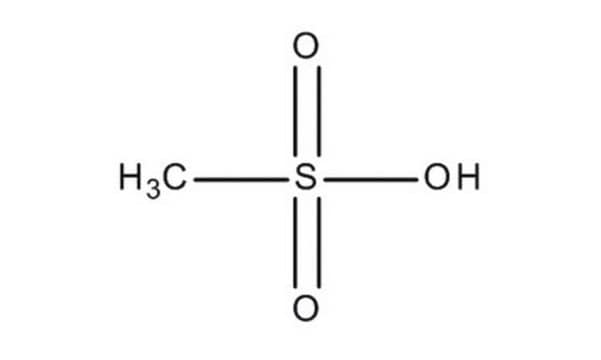M4141
Methanesulfonic acid solution
4 M (with 0.2% (w/v) tryptamine)
Synonym(s):
Sulfomethane
About This Item
Recommended Products
form
liquid
Quality Level
concentration
4 M (with 0.2% (w/v) tryptamine)
storage temp.
2-8°C
SMILES string
CS(O)(=O)=O
InChI
1S/CH4O3S/c1-5(2,3)4/h1H3,(H,2,3,4)
InChI key
AFVFQIVMOAPDHO-UHFFFAOYSA-N
Looking for similar products? Visit Product Comparison Guide
Application
Packaging
Caution
Signal Word
Danger
Hazard Statements
Precautionary Statements
Hazard Classifications
Acute Tox. 4 Oral - Eye Dam. 1 - Met. Corr. 1 - Skin Corr. 1B - Skin Sens. 1 - STOT SE 3
Target Organs
Respiratory system
Storage Class Code
8A - Combustible corrosive hazardous materials
WGK
WGK 2
Personal Protective Equipment
Choose from one of the most recent versions:
Certificates of Analysis (COA)
Don't see the Right Version?
If you require a particular version, you can look up a specific certificate by the Lot or Batch number.
Already Own This Product?
Find documentation for the products that you have recently purchased in the Document Library.
Customers Also Viewed
Our team of scientists has experience in all areas of research including Life Science, Material Science, Chemical Synthesis, Chromatography, Analytical and many others.
Contact Technical Service







